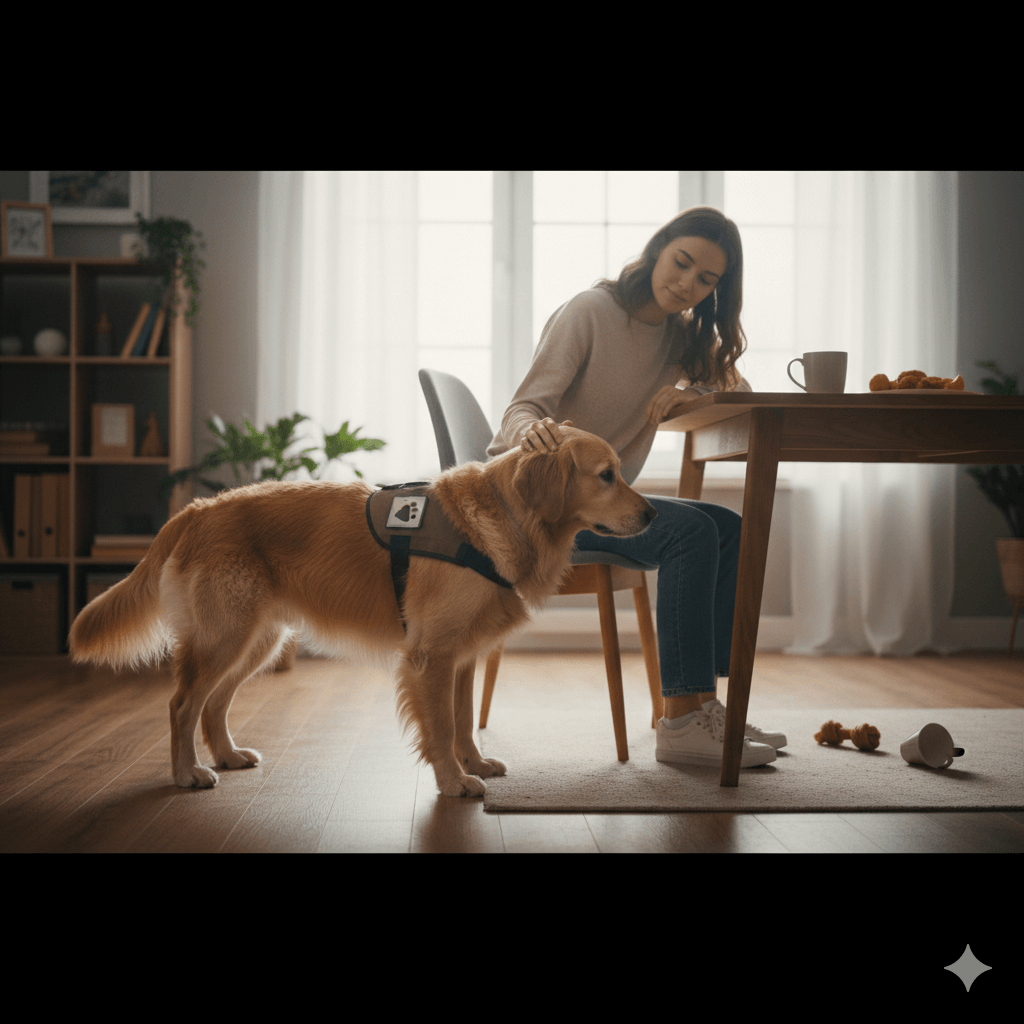How to Get Rid of Dog Hives: A Comprehensive Guide
If you’ve ever noticed raised, red welts on your dog’s skin, chances are they’re dealing with hives. Also known as urticaria, hives in dogs can be uncomfortable and alarming for pet owners. These itchy bumps often appear suddenly and can spread across the body, leaving both you and your furry friend feeling stressed. But don’t worry—hives are typically treatable, and most cases resolve quickly with the right care. In this blog post, we’ll explore what causes hives in dogs, how to identify them, and most importantly, how to get rid of them effectively. Whether it’s a mild reaction or something more serious, you’ll have the tools you need to help your pup feel better fast.
What Causes Dog Hives? Common Triggers You Need to Know
Hives in dogs are often an allergic reaction to something in their environment, diet, or even medication. Identifying the cause is the first step toward treating and preventing future outbreaks. Here are some common triggers to watch out for:
Environmental Allergens : Pollen, grass, dust mites, or mold spores can irritate your dog’s skin.
Insect Bites or Stings : Bees, wasps, ants, or fleas can cause localized or widespread hives.
Food Allergies : Ingredients like beef, chicken, dairy, or grains may trigger an allergic reaction.
Medications or Vaccines : Some dogs develop hives as a side effect of certain drugs or vaccines.
Chemical Exposure : Shampoos, cleaning products, or pesticides can irritate sensitive skin.
Understanding these triggers can help you pinpoint the source of your dog’s discomfort. Once you know what caused the hives, you can take steps to eliminate or avoid the allergen in the future.
Signs Your Dog Has Hives: What to Look For
Recognizing hives early can make treatment faster and more effective. While hives are usually easy to spot, other symptoms may accompany them. Here’s what to look for if you suspect your dog has hives:
Raised, Red Welts : These are the hallmark signs of hives and can appear anywhere on the body.
Swelling : Swollen areas around the face, ears, or paws may indicate a more severe reaction.
Itching and Scratching : Dogs with hives often scratch excessively due to intense itching.
Restlessness or Whining : Discomfort from hives can make your dog restless or vocalize their distress.
Behavioral Changes : Lethargy or unusual aggression may signal that your dog is feeling unwell.
If you notice any of these signs, it’s important to act promptly. Early intervention can prevent the condition from worsening and ensure your dog feels comfortable again soon.
Check this guide 👉What Food to Avoid for Dogs with Skin Allergies: Best 7 Tips
Check this guide 👉Why Is My Dogs Skin Turning Black? Best 7 Health Tips!

Symptoms of Dog Hives | Immediate Actions to Take |
|---|---|
Raised, red welts on the skin | Apply a cool compress to soothe irritated areas. |
Swelling around the face | Monitor breathing and seek veterinary help if needed. |
Excessive itching | Use an oatmeal-based shampoo for relief. |
Restlessness or whining | Keep your dog calm and in a quiet space. |
Behavioral changes | Avoid potential allergens and consult your vet. |
Home Remedies for Dog Hives: Simple Solutions to Try
While veterinary care is always recommended for persistent or severe cases, there are several home remedies you can try to alleviate your dog’s hives. These methods focus on soothing the skin and reducing inflammation. Here are some safe and effective options:
Cool Compress : Apply a damp, cool cloth to the affected areas to reduce swelling and itchiness.
Oatmeal Bath : Bathe your dog in an oatmeal-based shampoo to calm irritated skin.
Antihistamines : Over-the-counter antihistamines like Benadryl (diphenhydramine) can help, but only after consulting your vet.
Hydration : Ensure your dog drinks plenty of water to flush out toxins and stay hydrated.
Remove Allergens : Wash your dog’s bedding and vacuum your home to eliminate potential allergens.
These remedies can provide temporary relief, but if the hives persist or worsen, it’s crucial to seek professional advice. Your vet can determine the underlying cause and recommend appropriate treatment.
When to See a Vet: Understanding Serious Cases
While many cases of dog hives are mild and resolve on their own, some situations require immediate veterinary attention. Knowing when to seek professional help can prevent complications and ensure your dog’s safety. Here are signs that warrant a trip to the vet:
Difficulty Breathing : Swelling in the throat or airways can lead to respiratory distress.
Severe Swelling : Significant swelling of the face, tongue, or throat indicates a possible anaphylactic reaction.
Persistent Hives : If hives last longer than 24 hours despite treatment, it’s time to see a vet.
Vomiting or Diarrhea : These symptoms may suggest a more serious allergic reaction or poisoning.
Lethargy or Collapse : Weakness or collapse could indicate a life-threatening emergency.
Prompt veterinary care can make all the difference in severe cases. Don’t hesitate to contact your vet if you notice any of these warning signs.
Tips to Minimize the Risk of Recurring Hives in Dogs
Preventing hives starts with understanding what triggers them and taking proactive steps to minimize exposure. While it’s not always possible to avoid every allergen, these strategies can significantly reduce the chances of your dog developing hives again. Here are some practical tips:
Identify and Avoid Allergens : Work with your vet to determine specific triggers and eliminate them from your dog’s environment.
Use Hypoallergenic Products : Opt for shampoos, detergents, and cleaning supplies labeled as hypoallergenic or pet-safe.
Regular Grooming : Bathe your dog regularly to remove potential allergens like pollen or dust from their coat.
Flea Prevention : Use vet-recommended flea and tick prevention products to avoid insect-related reactions.
Monitor Diet Closely : Introduce new foods gradually and watch for any adverse reactions.
By implementing these preventive measures, you can create a safer and more comfortable environment for your dog, reducing the likelihood of future hives outbreaks.
How to Modify Your Dog’s Diet to Reduce Hives
For dogs prone to hives, dietary adjustments can play a crucial role in managing their condition. Certain foods may trigger allergic reactions, so finding the right balance is essential. Here are some dietary changes to consider:
Switch to Limited Ingredient Diets : Choose dog food with fewer ingredients to minimize the risk of triggering allergies.
Avoid Common Allergens : Eliminate common allergens like beef, chicken, dairy, and grains from your dog’s meals.
Incorporate Omega-3 Fatty Acids : Add fish oil or flaxseed oil to reduce inflammation and support skin health.
Introduce Probiotics : Probiotic supplements can improve gut health and strengthen the immune system.
Consult a Veterinary Nutritionist : Get professional guidance to create a customized meal plan for your dog.
A well-balanced diet tailored to your dog’s needs can help manage hives and promote overall health. Always consult your vet before making significant dietary changes.
Why Comfort and Reassurance Matter When Your Dog Has Hives
While physical care is vital, emotional support plays an equally important role in helping your dog recover from hives. Skin irritations can make your dog feel anxious or uncomfortable, so providing comfort and reassurance is key. Here are some ways to support your dog emotionally:
Stay Calm and Reassuring : Dogs pick up on their owner’s emotions, so staying calm helps reduce their stress.
Provide Gentle Affection : Petting or cuddling your dog can help them feel safe and loved.
Create a Quiet Space : Set up a cozy, quiet area where your dog can rest without distractions.
Engage in Low-Stress Activities : Play calming games or practice short training sessions to keep their mind occupied.
Reward Positive Behavior : Use treats or praise to encourage calm behavior during recovery.
Emotional support not only strengthens your bond but also aids in your dog’s healing process. A happy, relaxed dog is more likely to recover quickly and stay resilient.
Frequently Asked Questions About Dog Hives
What are dog hives?
Dog hives, or urticaria, are raised, red welts on the skin caused by an allergic reaction.
Are hives dangerous for dogs?
Most cases are mild, but severe reactions can lead to breathing difficulties or anaphylaxis.
Can I give my dog Benadryl for hives?
Yes, but only under veterinary guidance and at the correct dosage.
How long do dog hives last?
Mild cases typically resolve within 24 hours, but persistent hives may require medical treatment.
What should I do if my dog’s hives don’t go away?
Consult your veterinarian to identify the underlying cause and receive appropriate treatment.
Helping Your Dog Feel Better: The Final Word
Dealing with dog hives can be stressful, but with the right knowledge and tools, you can help your furry friend recover quickly and comfortably. From identifying triggers to trying home remedies and knowing when to seek veterinary care, every step you take brings your dog closer to relief. Remember, prevention is key—keeping your dog’s environment clean, avoiding known allergens, and monitoring their health can reduce the likelihood of future outbreaks. By staying vigilant and proactive, you can ensure your dog stays happy, healthy, and free from the discomfort of hives. After all, nothing is more rewarding than seeing your loyal companion wag their tail with joy once again!
Understanding Bone Supplement for Cats: Best 7 Expert Tips! – Safe, vet-approved guidance for strong feline bones & balanced nutrition.
Bone Supplement for Dogs: Best 7 Expert Tips! – Expert guide to calcium, collagen & bone health for every life stage.
Understanding Can Cats Get Sunburn: Best 7 Expert Tips! – Protect your feline from UV damage with vet-backed prevention strategies.
How to Train a Seizure Alert Dog: Best 7 Expert Tips! – Learn expert-backed steps to nurture natural instincts into reliable, life-saving seizure alerts.





